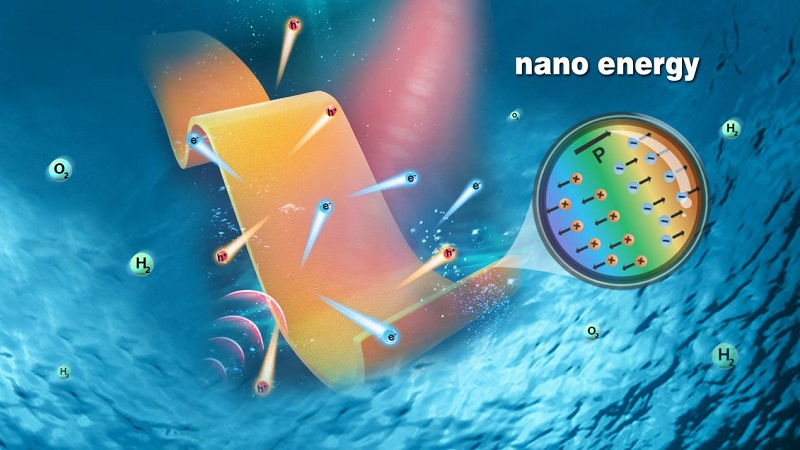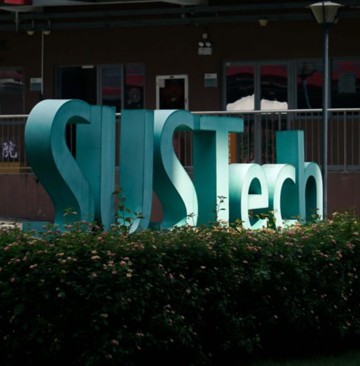Advances in piezocatalysis through SUSTech-led research
Piezoelectric materials have promising potential for converting mechanical energy into chemical energy (i.e. piezocatalysis) by coupling the piezotronic effect with electrochemical processes. The piezopotential generated by an external force can efficiently separate free carriers (electrons and holes), allowing piezoelectric materials be directly used for renewable energy production and environmental remediation using weak mechanical force, such as noise and vibration from the surrounding environment.

Recently, Professor Zhang Zuotai of the School of Environmental Science and Engineering (SESE) at Southern University of Science and Technology (SUSTech) led his research team to make significant progress in this field, publishing two papers in top international journal Nano Energy.
The first paper is entitled “Enhanced catalytic performance by multi-field coupling in KNbO3 nanostructures: Piezo-photocatalytic and ferro-photoelectrochemical effects.”

In this work, the team designed and synthesized two-dimensional piezoelectric KNbO3 nanosheets. Both experimental and theoretical calculations showed that the material has larger piezoelectric potential and better catalytic activity under applied stress. In addition, the photocurrent of KNbO3 nanosheets based photoelectrodes can be effectively modulated by the ferroelectric polarization. The team believes that the outcomes of this research could provide future guidance for the development of other piezo-/ferroelectric materials for solar/mechanical energy conversion.
Visiting student Yu Dongfang was the first author of the paper. Professor Zhang Zuotai and Research Assistant Professor Li Shun were the corresponding authors.
Original article – https://www.sciencedirect.com/science/article/pii/S2211285519301053
The second paper is entitled “Few-Layer Transition Metal Dichalcogenides (MoS2, WS2, and WSe2) for Water Splitting and Degradation of Organic Pollutants: Understanding the Piezocatalytic Effect”.

Two-dimensional layered transition metal disulfides (TMDs) have attracted much attention due to their unique electronic, mechanical and chemical properties. In this study, the research team prepared a series of two-dimensional TMDs (MoS2, WS2 and WSe2), and found that they can split water to produce hydrogen under ultrasonic mechanical force. The theoretical calculations showed that the catalytic efficiency is tightly related to the piezoelectric coefficient. In addition, the series of materials can also degrade tetracycline efficiently, which provides a new way for the treatment of emerging environmental pollutants. Their research may have profound implications in solving challenging energy and environmental issues by scavenging energy waste such as noise and vibration from the environment.
Assistant Professor Li Shun, visiting students Zhao Zhicheng and Yu Dongfang are the first co-authors of the paper. Professor Zhang Zuotai and Assistant Professor Zhao Jinzhu of the Academy of Advanced Interdisciplinary Studies are corresponding authors.
Original article – https://www.sciencedirect.com/science/article/pii/S2211285519307906
These works are supported by the National Natural Science Foundation of China, the Guangdong Provincial Key Laboratory of Soil and Groundwater Pollution Control, the Shenzhen Science and Technology Innovation Committee, and Shenzhen Clean Energy Research Institute.
